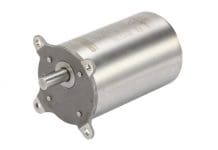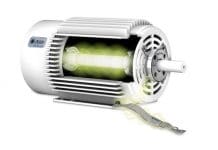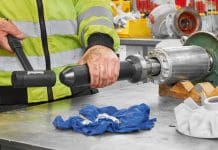 How many times can you repair an electric motor? It’s a question that comes up from time to time and the answer is actually pretty straight forward, but it might be worth going through the processes to understand it more clearly.
How many times can you repair an electric motor? It’s a question that comes up from time to time and the answer is actually pretty straight forward, but it might be worth going through the processes to understand it more clearly.
Is there a limit to how many times you can have a motor repaired before you can’t do it anymore? The short answer is that an electric motor can be repaired indefinitely. There is a caveat, however: there is a limit to how many times you can simply recondition a motor as repeated varnish dips eventually will require a burnout and rewind. Let’s take a look at the process to better understand the limitations.
Varnish Dipping
There are three main purposes behind a varnish dip:
- To electrically insulate the windings/coils
- To protect the windings/coils from contaminants that could compromise their functionality
- To mechanically secure the coils so they don’t move.
This is a necessary part of motor reconditioning and is often required with certain types of repairs. The problem is that varnishing the same windings over and over – without performing a full strip and rewind – obstructs the air vent openings in the armature or stator. The insulation on the windings chokes off the airflow they need to function properly. This results in the motor starting to run hot and eventually overheating.
The motor starts to run hot and the operating temperature of the windings increases to the point where they don’t function as designed.
Over time, you’ll notice a loss of motor performance. Even though it may not be obvious, the insulation on the windings is degrading quickly. As a result of these combined factors , you will likely end up with a motor failure that could have been avoided.
By this time, a motor burnout and rewind are necessary. The irony is that this is the very thing that should have been done in the first place to prevent this type of failure, if the unit has had an extensive repair history but has not been rewound. Knowing the repair history can be crucial to the decision making and starting new with a VPI (Vacuum Pressure Impregnation) will ensure the most longevity.
When the air vent openings are going to be blocked, the better course of action is a burnout and rewind of the coils followed by VPI.
Electric Motor Burnout and Rewind
The electric motor rewind process always starts with gathering winding data. This data includes key specifications such as the number of slots, coils, and turns per coil as well as wire size, bracing, critical dimensions, and insulation parameters. The repair shop then verifies the winding data to make sure the windings are correct for the motor’s application. From there, the repair shop may make some redesign suggestions. The core can be damaged by the burnout process if not confirmed via a core-loss test. If the core insulation begins to fail, this factor could prevent future repairs.
After the shop verifies the data, they will proceed with burnout of the existing varnish in a temperature-controlled oven. After burnout comes stripping, or removing of the windings from the stator core. The shop then fabricates new (possibly redesigned) coils and installs them in the stator slots. Careful care is taken with correct blocking and bracing, followed by connecting the coils together.
Before anything else occurs, the shop will test the new coils according to IEEE and EASA standards. Next comes the insulation process using either a traditional varnish dip or a more modern VPI.
Electric Motor Redesign
Besides the standard motor burnout and rewind process, you can also opt for a detailed redesign. The goal of a redesign is to increase the performance, efficiency, reliability, and life expectancy of your motor and its components. It begins with a thorough analysis of its current design followed by suggested changes to different aspects of the motor such as speed, voltage, and horsepower. It might include better wire insulation or new M19/C5 laser cut lamination designs to create an improved core. There may also be the potential for improved induction rotor designs. It’s also not uncommon to have a new shaft machined, new fans cast, and end bells machined.
Conclusion
So, how many times can you repair a motor? So long as the shell exists, a motor can be repaired and reconditioned. The key is to remember that eventually that motor will need a burnout and rewind before it is insulated again. Then, with proper maintenance and smart reconditioning, there is no limit to how many times you can have that motor repaired. Consider the old Westinghouse motors that have been in service for nearly 100 years. Choosing the right vendor who is focused on long term reliability can be key in ensuring your equipment reaches it’s full potential.
Author: Ryan Karcher, Territory Development Manager
Email: [email protected]





























